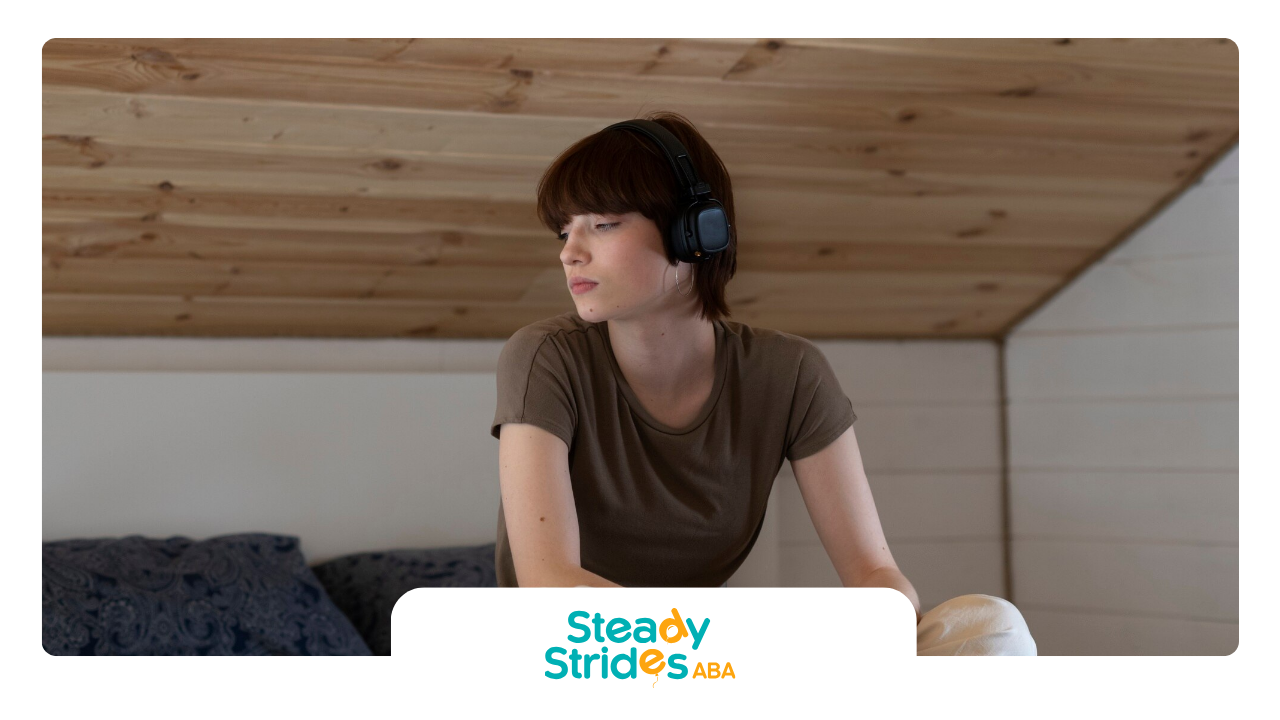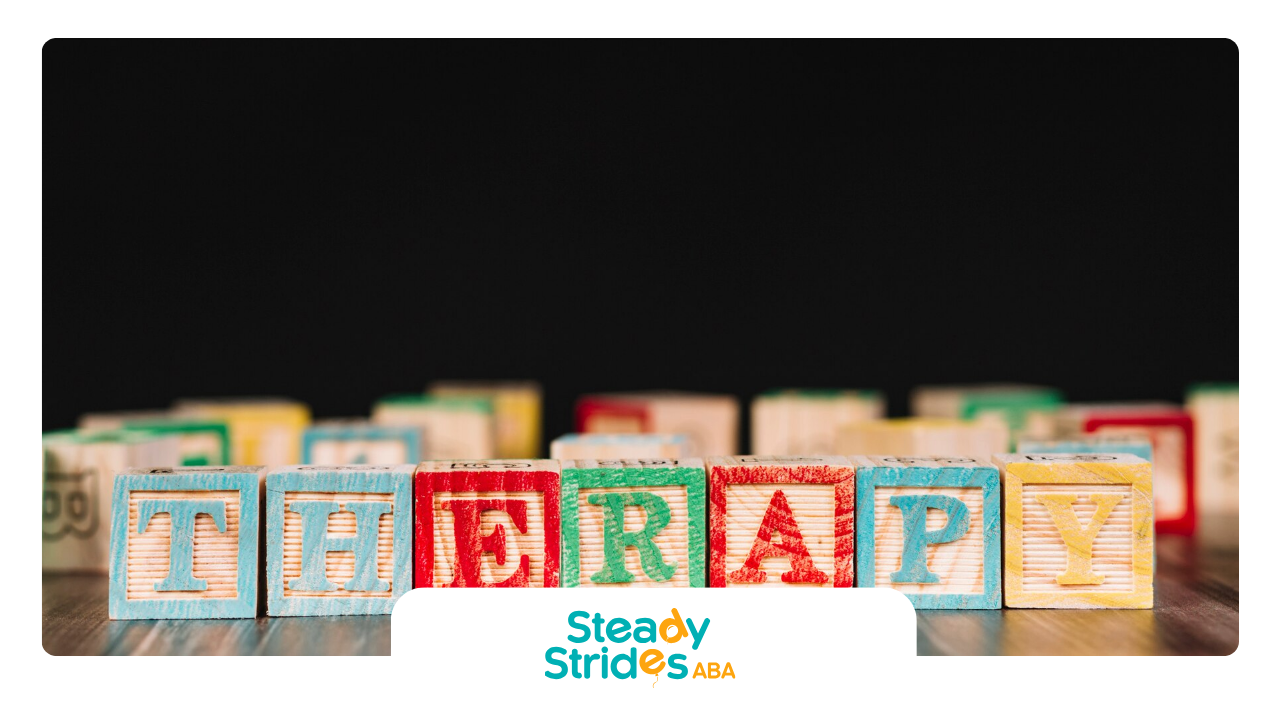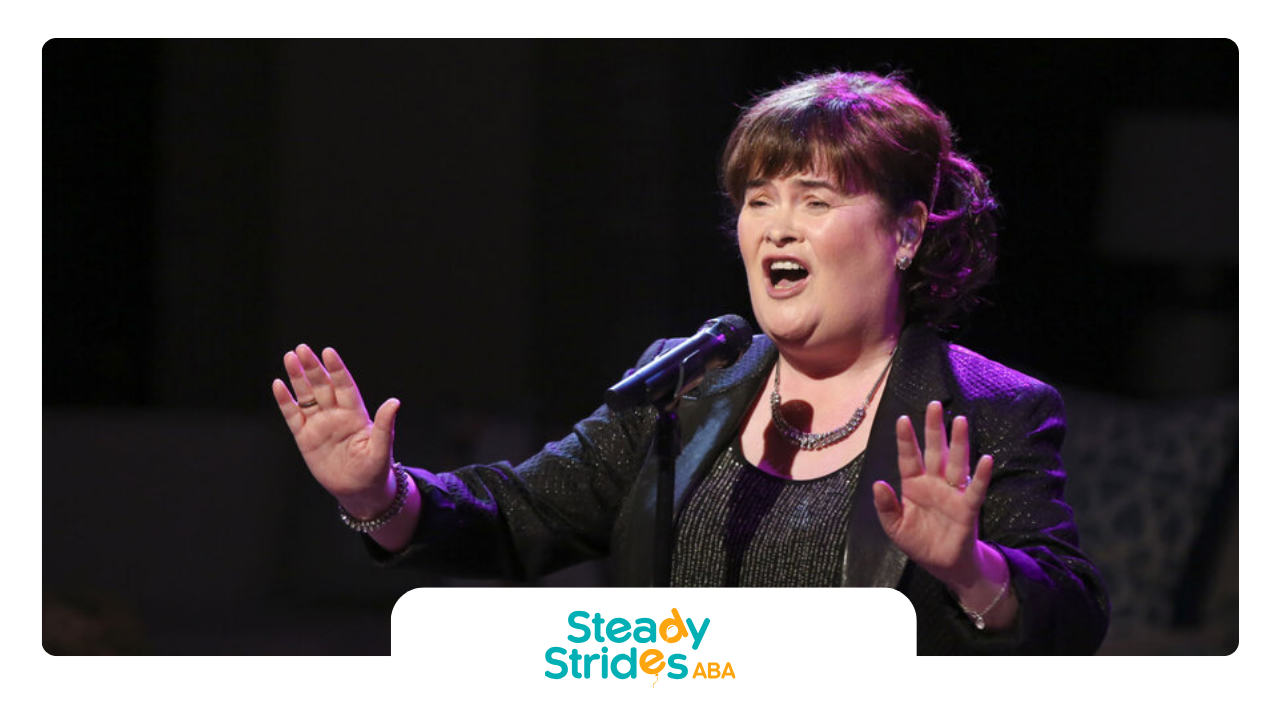When exploring therapies for autism spectrum disorder (ASD), it's important to know the key differences between applied behavior analysis (ABA) and other therapy types. This comparison is here to help you understand and choose the best option for your child's growth and well-being.
Understanding ABA Therapy
Applied behavior analysis (ABA) therapy is a well-known method based on the science of behavior. It examines how behavior works and how people learn. ABA therapy uses these ideas in everyday life. The goal is to encourage positive behaviors and reduce negative behaviors.
This therapy is especially useful for children with autism spectrum disorder (ASD). It helps them learn new skills and decreases problem behaviors. ABA therapy also supports these kids in using what they learn in different settings.
Core Principles of ABA Therapy
ABA therapy is based on the ideas of behaviorism. This means that people learn behaviors through their interactions with their surroundings. If a behavior leads to a good outcome, like praise or a small reward, that behavior is more likely to happen again. This is known as positive reinforcement.
On the other hand, when a behavior gets a bad outcome, like punishment or a timeout, it is less likely to be repeated. ABA therapy uses these ideas to encourage desired behavior. It does this by rewarding positive behaviors and discouraging negative behaviors.
By consistently using these methods, ABA therapists can help people learn new skills, reduce challenging behaviors, and help these changes happen in different places and situations.
How ABA Therapy is Implemented
ABA therapy is very personal. Each treatment plan is made just for that child. Before starting, a trained ABA therapist does a complete check to see the child's strengths and challenges. They do this by watching the child's behavior, talking to parents and caregivers, and looking at important records.
From this check, the ABA therapist creates a clear treatment plan. This plan lists specific goals, methods to teach new skills, and ways to track progress. ABA therapists use different techniques, like discrete trial training (DTT), natural environment training (NET), and pivotal response training (PRT) to help teach new skills and manage difficult behaviors.
During therapy, ABA therapists keep track of the child's progress. They collect data all the time and change the intervention plans if needed. This approach helps make sure the therapy really works and that the child is making good progress.
Overview of Other Therapies for Autism
ABA therapy mainly deals with changing behaviors. However, many other therapies help kids in different ways. Some well-known therapies for autism are speech and language therapy, occupational therapy, and physical therapy.
These therapies can work well alongside ABA therapy. They help with communication, motor skills, sensory issues, and daily living skills.
ABA vs. Speech and Language Therapy
Speech and language therapy (SLT) helps children develop their communication skills. This includes both talking and body language, social skills, and using language well. It can involve therapy to speak clearer, lessons to increase vocabulary and grammar, and training to improve how they interact with others.
While ABA therapy can include communication goals, SLT is mainly focused on improving language and communication. Speech-language pathologists use special techniques to check and treat communication problems. Their goal is to help people express their thoughts and understand what others say.
Sometimes, ABA therapy and SLT can work together. In these cases, ABA can help reinforce the communication skills learned in SLT sessions.
ABA vs. Occupational Therapy
Occupational therapy (OT) helps children become more independent and active in their daily lives. Occupational therapists (OTs) work on fine motor skills, like handwriting and getting dressed. They also help with gross motor skills, which include running and jumping. OTs improve sensory processing and adaptive behaviors needed for daily living.
The goal of OT is to build skills that let children participate in important activities like self-care, play, and schoolwork. Sometimes, OT and ABA therapy might work together on adaptive behaviors. However, OT mainly targets the sensory and motor skills that make it difficult for a child to participate in daily activities.
ABA vs. Physical Therapy
Physical therapy (PT) helps a child's physical growth. It focuses on gross motor skills, coordination, balance, and movement. PT is great for kids with developmental disorders that can affect how they move, like cerebral palsy or muscular dystrophy.
Physical therapists (PTs) create a special plan for each child. This plan often includes exercises, stretches, and activities designed to make muscles stronger, improve flexibility, and enhance coordination. While ABA therapy may work on motor skills too, PT mainly focuses on improving physical development and tackling any challenges the child might have.
How is ABA Therapy Different?
One special thing about ABA therapy is that it is very focused and uses a lot of data. Typically, clients have many hours of individual therapy every week. This can happen at home, school, or in the community. This focused way helps therapists deal with specific behavioral challenges better.
Also, ABA therapy depends on collecting and analyzing data. This helps track progress and change treatment plans if needed. This personal approach makes ABA therapy different from other kinds of therapy. It makes sure that each child's needs and reactions shape the therapy they receive.
Goals and Outcomes
ABA therapy focuses on measurable behaviors. It breaks down tough skills into smaller, simpler steps. For instance, if a child needs to communicate better, the therapist may first show them how to point at what they want. Next, they would teach them to use one word. Over time, they would help the child use complete sentences. This step-by-step method makes it easy to track progress. It helps both the therapist and the child know what success looks like.
Parents and caregivers also participate in the therapy. They learn to encourage good behaviors at home and in everyday life. This practice in different settings is very important in ABA therapy. The main aim is to help people learn the skills they need for a more independent and happy life, which boosts their well-being and helps them fit into society.
ABA therapy uses a strong and personalized approach. It relies on data and focuses on positive reinforcement. This method aims to bring lasting positive changes to the lives of people with ASD and their families.
Methodologies and Approaches
ABA therapists use different methods to help each person based on their needs and how they learn best. One popular method is Discrete Trial Training (DTT). This technique breaks skills into small steps. The therapist teaches one step at a time and gives instant rewards for correct answers.
Another method is Natural Environment Training (NET). This approach uses everyday situations, like playing or eating, as chances to learn. NET helps children use their real-life skills, making learning easier and more fun.
ABA therapy often focuses on early intervention. Studies show that starting therapy early can greatly help children with ASD. Many kids begin ABA therapy in their toddler years to help with any delays and to support their learning.
Comparative Effectiveness of ABA Therapy
Applied behavior analysis (ABA) therapy has strong scientific research showing it works well for treating autism spectrum disorder (ASD). Many studies have proved that ABA therapy helps improve language, social skills, daily living skills, and academic performance in people with ASD.
The success of ABA therapy can depend on several factors, including the person’s age, the severity of their symptoms, and the intensity of the treatment. However, research shows that ABA therapy can have lasting benefits. These benefits include better communication, more independence, fewer difficult behaviors, and a better quality of life.
Success Rates in Autism Treatment
Applied behavior analysis (ABA) therapy is considered a top choice for treating autism spectrum disorder (ASD). Many studies show it can help improve different skills. The success stories of ABA therapy are positive. Research shows that a lot of children who get early and intense ABA therapy make good progress in areas like language skills, social skills, and daily living skills.
However, ABA therapy is not the same for everyone. Treatment success can differ based on personal needs and how the therapy is done. Things like how old the child is when they start therapy, how much therapy they get, and how much the parents are involved can affect the results.
While ABA therapy offers great hope for children with ASD, it's important to keep real expectations. Each child may react differently to the treatment. Talking openly with trained ABA professionals can help parents and caregivers choose the best therapy plan for their child's specific needs.
Long-term Benefits
Beyond the quick improvements in some skills, ABA therapy can provide important long-term benefits for people with ASD. One key area in which it affects people is social interactions. ABA therapy can help people communicate better, have more meaningful social talks, and form stronger bonds with friends and family members.
Additionally, ABA therapy encourages independence. It helps individuals do daily living tasks, like getting dressed, grooming, and making meals, on their own. This new ability can greatly boost their self-esteem, confidence, and overall happiness.
All these improvements together lead to a better quality of life for individuals with ASD. They can take part more in their communities, follow their interests, and enjoy lives that are fulfilling and meaningful.
Pros and Cons of ABA Therapy
ABA therapy has many benefits. It is based on strong science, provides a personalized approach, and can greatly improve behavior and skills. However, like all treatments, ABA therapy has some criticism and possible downsides.
It is important to think about both the pros and cons to make a smart choice about whether ABA therapy fits your child’s needs and your family’s values.
Advantages of ABA Therapy
One big benefit of ABA therapy is that it helps teach new skills. The therapy uses a structured step-by-step method along with positive reinforcement. This helps children with ASD learn abilities like communication, self-care, and social skills. These skills can seriously improve a child’s independence and overall happiness.
Additionally, ABA therapy builds positive behaviors through reinforcement and good interactions. This friendly approach creates a supportive space for kids. It can boost their self-esteem and motivation to learn.
In the end, ABA therapy gives people the key skills and behaviors they need to succeed. This can lead to better social inclusion. It allows those with ASD to join in more easily in their communities and feel a stronger sense of belonging and acceptance.
Criticisms and Concerns
ABA therapy has been proven to be effective, but it has also faced criticism that raises important ethical questions. Some people worry that earlier forms of ABA used punishment or unpleasant methods to reduce bad behaviors.
Today, ABA therapy focuses more on positive reinforcement and treats individuals with care and respect. Another concern is that some view ABA as a way to "normalize" autistic traits rather than celebrate neurodiversity.
Critics believe that ABA therapy should not aim to control natural autistic behaviors. Instead, it should help individuals build coping skills and strategies that fit their needs best. It is important to have open and respectful conversations with ABA providers. This will help make sure that the therapy suits your family’s values and honors your child’s unique strengths and challenges.
Choosing the Right Therapy for Your Child
It is very important to choose the right therapy for your child. You should talk to qualified experts first. These may include a certified behavior analyst (BCBA), a speech-language pathologist, or an occupational therapist. They can assess your child’s needs and discuss different therapy options. They will then help you make a plan that best helps your child grow and thrive.
Finding the right fit when considering therapy options for your child is key. ABA therapy near me for kids offers specialized, evidence-based strategies that can help improve communication, behavior, and social skills. If you're looking for tailored support to make a real difference in your child's development, reach out to local ABA providers today and discover how their personalized approach can benefit your family.
Factors to Consider
Navigating different therapies takes careful thought. Your child's needs should come first. The best type of therapy depends on your child's unique challenges, age, and learning style.
Some children may do well with ABA therapy, which has a structured and behavioral approach. Other children might do better in play-based settings, like occupational therapy. Family resources are important too. This includes how much time you can commit, your budget, and if you can find qualified therapists. These factors will help you decide what options are doable and sustainable for your child.
Choosing the right therapy is a team effort. It helps to get advice from professionals who know what they are talking about. Connecting with other families who have faced similar decisions can also be very helpful.
Working With Professionals
When you start therapy, it is very important to build strong relationships with qualified ABA therapists, pediatricians, and other experts who care for your child. Open communication and teamwork help ensure that therapy meets your child's changing needs and that you get helpful support and advice.
Keep in touch with therapists, go to therapy sessions when you can, and participate in home activities. This strengthens the bond with therapists and connects therapy to everyday life.
You can create a support network by working closely with caring and skilled professionals. This will help your child overcome challenges, learn important skills, and reach their full potential.
Right-Fit Therapy Quiz: ABA, Play-Based, or Both?
This 3-minute tool helps parents compare ABA therapy with occupational/play-based approaches. Answer questions about your child's challenges, learning style, and family capacity to get a personalized therapy recommendation. Developed with BCBA professional insights, it simplifies complex decisions while emphasizing expert collaboration.
1. What's your child's primary challenge area?
2. How does your child learn best?
3. Family availability for therapy sessions?
Recommended Approach:
Conclusion
In conclusion, it’s important to know the differences between ABA therapy and other types of therapy when deciding how to treat autism. ABA therapy is unique because it uses a structured method, focuses on changing behavior, and creates plans that fit each person's needs.
Every therapy has its benefits, but ABA is known for its strong success rates and lasting benefits for people with autism to help them reach their full potential. When picking a therapy for your child, consider their specific needs, goals, and likes. Talk to professionals to find the best treatment plan. The right choice can greatly impact your child's growth and overall happiness.
Steady Strides ABA is Texas’ trusted leader in ABA therapy, offering customized programs designed to meet the unique needs of children with autism. Unlike other therapies, ABA focuses on tangible results by targeting specific behaviors and skill development. With a dedicated team of experts, Steady Strides ensures your child receives the best care tailored to their individual growth.
Reach out today to learn how our ABA therapy can make a meaningful impact on your child’s life.
Frequently Asked Questions
What is the primary goal of ABA therapy?
The main aim of ABA therapy is to boost good behavior and lessen problem behaviors. This helps to make a person's life better. It often involves teaching important skills like communication, self-care, and social skills.
How does ABA therapy differ from occupational therapy?
ABA therapy works on changing behaviors. On the other hand, occupational therapy helps improve skills needed for daily living. Both therapies can include individual therapy sessions. They are often suggested for autistic children to meet their specific needs.
Can ABA therapy be combined with other forms of therapy?
Yes, ABA therapy can work well with other therapies, including speech and occupational therapy. This approach helps create a better treatment plan for the child’s needs. Therapists need to communicate openly. This way, they can provide connected and helpful care for the child.
Sources:
https://www.webmd.com/mental-health/what-is-applied-behavior-analysis
https://childmind.org/article/controversy-around-applied-behavior-analysis/
https://www.verywellmind.com/what-is-an-aba-design-2794809
https://www.appliedbehavioranalysisprograms.com/faq/how-does-applied-behavior-analysis-differ-from-other-types-of-therapy/
https://www.autismspeaks.org/aba-and-other-therapies












